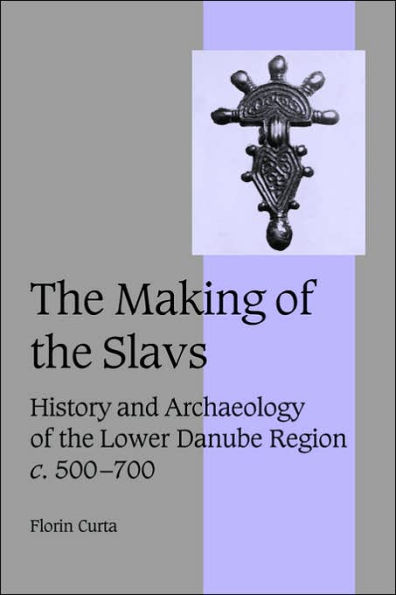The Making of the Slavs: History and Archaeology of the Lower Danube Region, c.500-700
This book offers a new approach to the problem of Slavic ethnicity in southeastern Europe between c. 500 and c. 700. The author shows how Byzantine authors "invented" the Slavs, in order to make sense of political and military developments taking place in the Balkans. Making extensive use of archaeology to show that such developments resulted in the rise of powerful leaders, responsible for creating group identities and mobilizing warriors for successful raids across the frontier. The author rejects the idea of Slavic migration, and shows that "the Slavs" were the product of the frontier.
1111442809
The Making of the Slavs: History and Archaeology of the Lower Danube Region, c.500-700
This book offers a new approach to the problem of Slavic ethnicity in southeastern Europe between c. 500 and c. 700. The author shows how Byzantine authors "invented" the Slavs, in order to make sense of political and military developments taking place in the Balkans. Making extensive use of archaeology to show that such developments resulted in the rise of powerful leaders, responsible for creating group identities and mobilizing warriors for successful raids across the frontier. The author rejects the idea of Slavic migration, and shows that "the Slavs" were the product of the frontier.
179.0
In Stock
5
1

The Making of the Slavs: History and Archaeology of the Lower Danube Region, c.500-700
496
The Making of the Slavs: History and Archaeology of the Lower Danube Region, c.500-700
496Hardcover(New Edition)
$179.00
179.0
In Stock

Product Details
| ISBN-13: | 9780521802024 |
|---|---|
| Publisher: | Cambridge University Press |
| Publication date: | 07/12/2001 |
| Series: | Cambridge Studies in Medieval Life and Thought: Fourth Series , #52 |
| Edition description: | New Edition |
| Pages: | 496 |
| Product dimensions: | 6.34(w) x 9.29(h) x 1.30(d) |
| Lexile: | 1520L (what's this?) |
From the B&N Reads Blog
